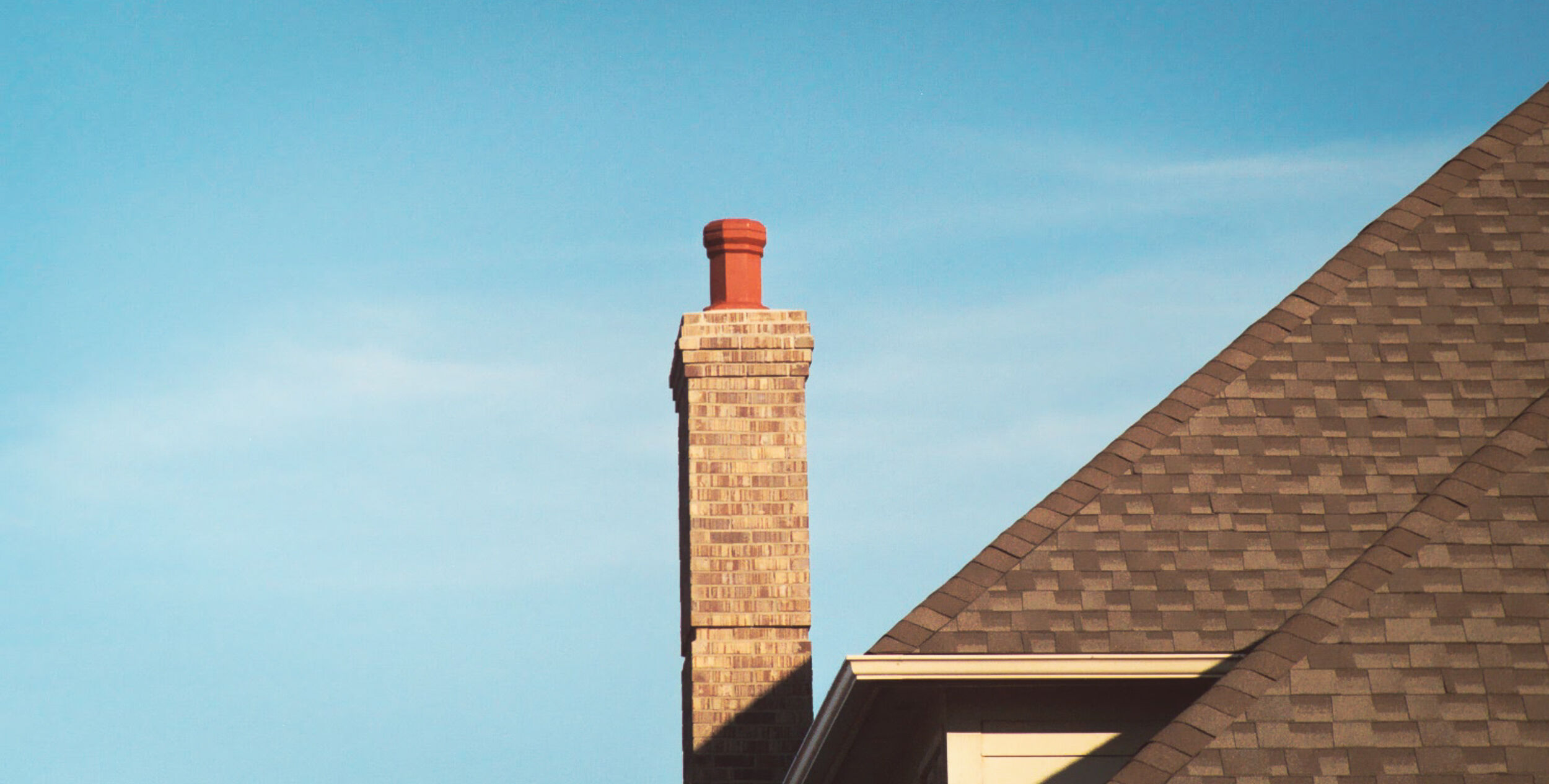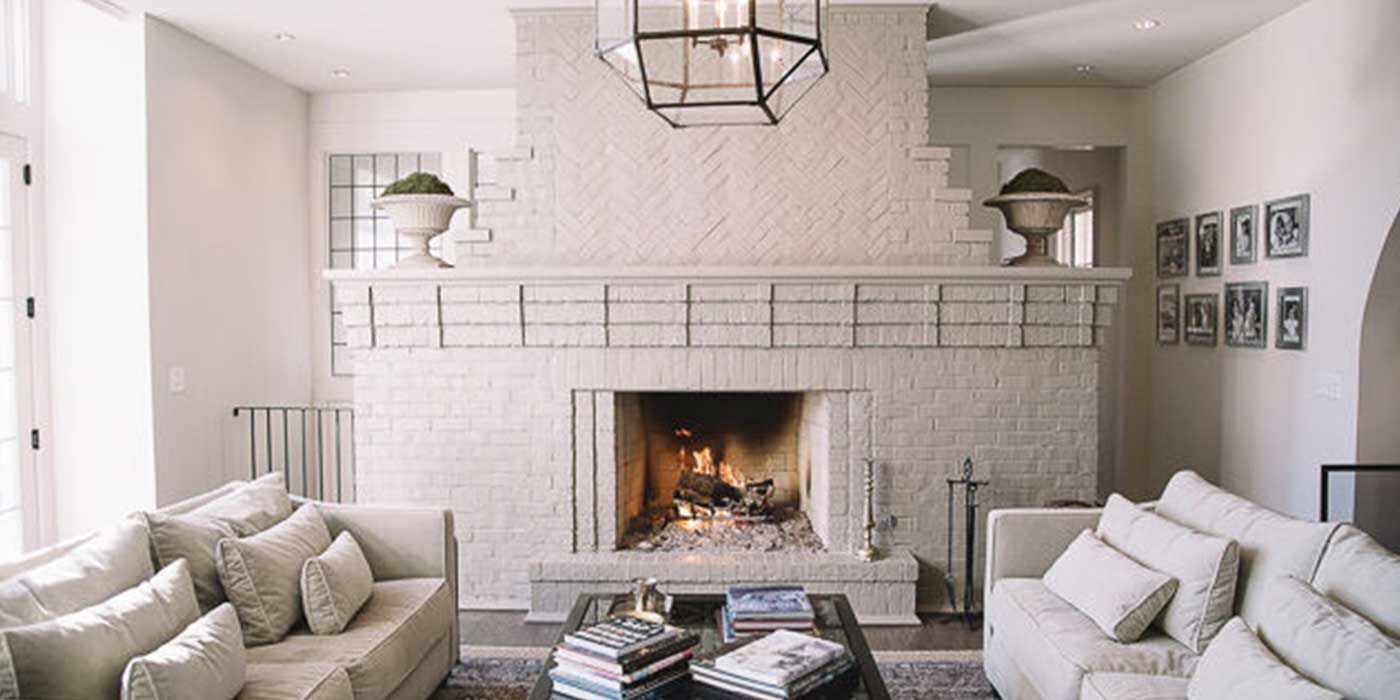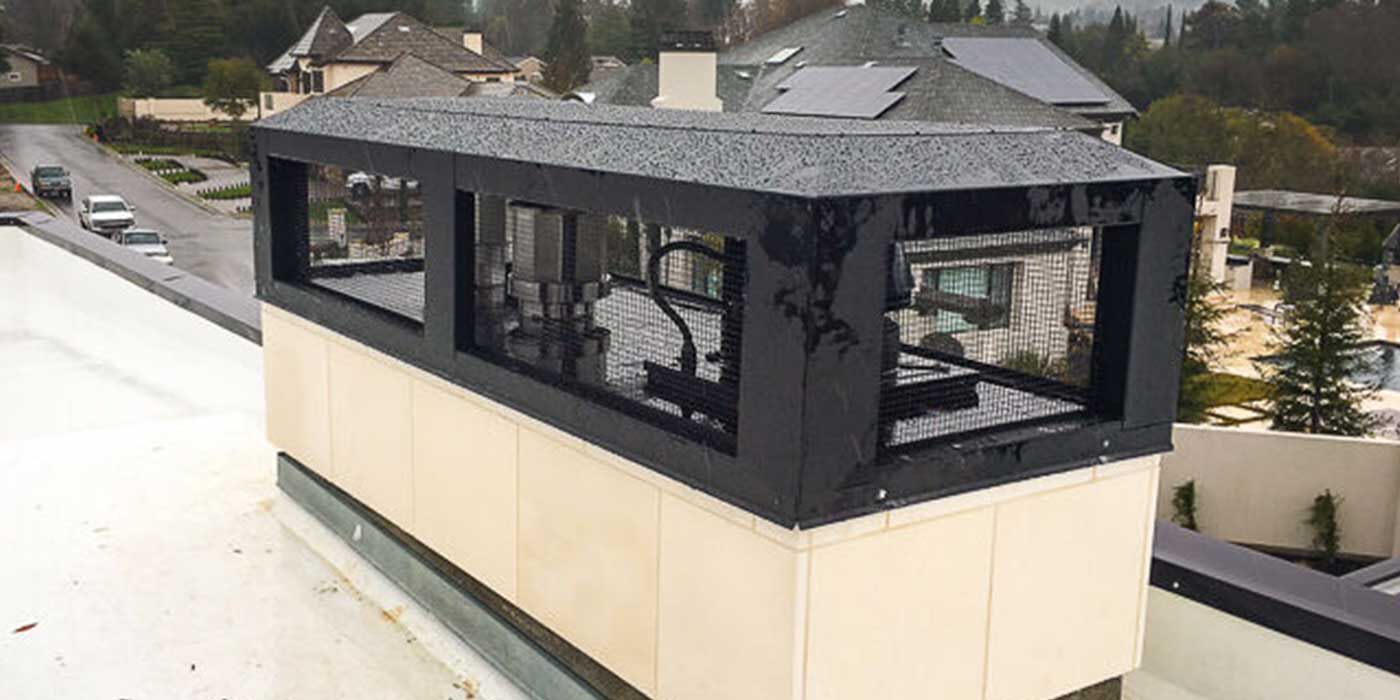By: Tom Regis, NFI Certified Master Hearth Professional
Last Updated: September 9, 2024
What is a Chimney?
A chimney is the engine that drives a fireplace. It is a negative pressure system that creates a natural draft to pull fresh air into the fireplace to complete combustion.
With the use of natural draft, chimneys generate the flow of air needed to maintain a fire while exhausting smoke, hot air, and combustion byproducts up and out of the home.
If there is a blockage in the chimney or part of it’s damaged, your fireplace may not work efficiently. This can cause poor draft, a chimney fire, or even a house fire.
How Does a Masonry Chimney Work?
Masonry chimneys use a difference in air pressure to create the draft needed to fuel the fire and expel combustion byproducts.
Cool, dense air surrounds the outside of the chimney while hot air from the fire fills the inside. The hot air rises up and out of the chimney, pulling more cool air into the firebox, and creating a difference in pressure known as the draft.
The hotter the fire is, the more hot air will be produced, and the stronger the draft will be. A strong draft allows the fireplace to burn fuel, and expel combustion byproducts, efficiently.
A poor draft and lack of fresh air can cause back-drafting, which pulls the smoke and combustion byproducts back down through the chimney and into the home.
What Causes a Poor Draft?
Poor draft most often has to do with home efficiency. Generally, hot air rises to the top of the house and escapes through little cracks and crevices, while cool air flows in through the lower levels to replace the hot air.
The top levels of a house have high pressure while the lower levels, like the basement, have low pressure, and the areas in between are neutral. This difference in pressure is known as the stack effect.
Newer homes are insulated well and incredibly air-tight. If your home is too tightly sealed, cool air won’t be able to get in, and hot air can’t escape, which will affect the performance of your fireplace and the chimney’s ability to establish a draft.
Improperly sized flues and chimneys not built to national code are also major causes of poor draft. The size of the flue and chimney should be in proportion to the size of the fireplace opening. If the flue or chimney is too small, air will flow too slowly and result in a weak draft.
How to Establish a Proper Draft
First, you'll want to open the chimney damper. A closed chimney damper will prevent air from flowing freely up through the chimney, causing smoke from the fire to spill back into your living area.
Warm Up the Flue
Once you open the damper, you may feel cold air rush into the fireplace, especially if your chimney is on the outside of your house. If this occurs, you'll want to warm up the flue before lighting the fire to help establish the draft.
To do this, you'll need to light some newspaper and hold it up inside the chimney damper. You'll know the flue is warm and the draft has been established once you feel the air being pulled up the chimney.
Open a Window
If your home is tightly sealed, opening a window close to your fireplace that’s on the windward side of your house (the side that gets hit by the wind) will create more pressure and lead to a better draft.
Opening a window on the opposite side, however, will depressurize your house and result in a backdraft.
Pro Tip:
If your home is drafty, make sure all windows and attic doors on the upper levels are shut. This will prevent too much warm air from escaping.
Turn off Appliances
Turning off competing sources of negative pressure, such as forced-air furnaces, kitchen ranges, clothes dryers, and fans, will also help to establish the draft and allow the chimney to function properly.
These types of appliances depressurize the home by pulling large amounts of air outside, resulting in negative pressure around the fireplace.
Chimney Height Impacts Drafting
If you regularly experience poor drafting, your chimney may be too short. The total height of the fireplace and chimney should be a minimum of 15 feet tall, as measured from the base of the fireplace to the very top of the chimney.
Anything shorter than 15 feet will result in a poor draft, so extending the chimney may be a great solution to your drafting problems.
A chimney should also be installed close to the peak of the roof. It should rise at least 3 feet above the point it exits the roof and must be 2 feet taller than the surrounding building and other objects within a horizontal distance of 10 feet. This is known as the 3-2-10 Rule.
What Causes a Chimney Blockage?
If your chimney is blocked, your fireplace will perform poorly, and combustion byproducts will get pushed back down into your home.
Soot Build-Up
One of the leading causes of chimney blockage is soot build-up. With each use of a fireplace, soot collects on the inside walls of the chimney. Over time, this collection of soot can restrict the airflow in the flue by as much as 30% and even lead to a blockage.
Excessive soot build-up can cause a whole host of issues that range from chimney fires to flue deterioration.
Pro Tip:
You can prevent soot build-up from wreaking havoc on your chimney by having it cleaned and regularly inspected by a licensed professional.
Damaged Flue Liner
Another cause of chimney blockage is the health of your flue liner. Clay chimney liners are an affordable way to line a masonry chimney, but they can be damaged very easily.
Corrosive conditions created by water vapor from gas fireplaces coupled with constant exposure to combustion byproducts can cause the flue liner to flake off.
Over time, these flakes will accumulate inside the chimney and create a blockage, leading to poor chimney performance and even a chimney fire, which can cause the flue liner to crack.
An easy way to repair a damaged flue liner is to install a stainless steel chimney liner.
Stainless steel liners fit inside the chimney and connect to the fireplace, providing a safe way for combustion gases to escape without further damaging the clay liner.
Critter Nests
It’s common to find small animals, birds, and even bees living inside chimneys.
Insects, birds, and critters will bring twigs, leaves, and other organic matter inside your chimney to build their nests, creating a blockage that restricts airflow.
You can prevent this from happening by installing a chimney cap to keep critters out. Chimney caps also keep rain, snow, and ice from damaging the interior of the chimney and firebox.
Find the Right Size Chimney Cap
How to Prevent a Chimney Fire
Some chimney fires can be large and dangerous, but others are so small they go unnoticed. In fact, you may not know you’ve had a chimney fire until your next chimney inspection.
Although they may be small, chimney fires still get hot enough to cause extensive damage to the interior and exterior of the chimney, such as cracked bricks and loosened mortar joints.
Cracks in your chimney and flue liner can cause combustion byproducts to leak back into your home. If a second chimney fire breaks out, it can travel through the cracks and loosened areas and ignite the rest of the house.
Signs of a Chimney Fire
Signs a chimney fire has occurred include:
- Smelling a pungent odor coming from the fireplace
- Hearing loud popping and cracking inside the chimney
- Seeing large flames or thick smoke billowing out of the top of the chimney
Creosote Build-Up
The leading cause of chimney fires is creosote build-up. Creosote is a highly-combustible, highly-acidic residue that’s created when hot combustion byproducts, like wood smoke or water vapor from gas fireplaces, mingle with the cool air in the chimney and produce condensation. This condensation sticks to the interior walls of the chimney, leaving a residue.
Creosote comes in many forms, depending on how long it’s left to accumulate inside a chimney. It can range from brown to black and have a consistency that’s light and flaky, sticky and tar-like, or smooth, shiny, and hard.
Hard creosote is the most advanced and can cause significant damage to your chimney if it’s not cleaned out. The best way to prevent a chimney fire is to periodically remove any creosote build-up or other highly-combustible debris that may be collecting inside your chimney.
You can purchase chimney cleaning products and do it yourself, or call a licensed chimney sweep.
Pro Tip:
We recommend having your chimney inspected and cleaned annually by a licensed professional.
How to Prevent Carbon Monoxide Poisoning
Chimneys not only help to establish the draft in a fireplace but also work to exhaust hazardous byproducts produced from burning wood and gas.
One of these byproducts is carbon monoxide. Carbon monoxide is colorless and odorless, making it impossible to detect with the naked eye or nose.
If left to accumulate in your home, it can lead to serious injury or death.
When a fireplace doesn’t have enough oxygen to complete combustion, it will pull oxygen from the surrounding room to fuel the fire.
If your home is tightly sealed, then fresh air won’t be able to get in to replace the air the fireplace is using. This will lead to a build-up of carbon monoxide and other combustion byproducts in your living space.
The best way to prevent carbon monoxide poisoning is to make sure your damper, throat, or top seal is open before using the fireplace so that combustion byproducts can escape.
You’ll also want to keep your fireplace and chimney clean and in good repair. You should have your chimney inspected and cleaned by a licensed chimney sweep at least once per year.
A chimney sweep will clear out any creosote build-up or debris that could be restricting airflow through the chimney and check for damaged flue tiles, and cracked or crumbling brick and mortar.
They’ll also inspect the exterior of the chimney for potential hazards, like a damaged chimney cap or a loose roof flashing.
If you suspect that your chimney may be damaged or isn’t functioning properly, always have it checked out by a certified professional before using it again.
Another way to prevent carbon monoxide poisoning is to install carbon monoxide detectors throughout your home.
Just like smoke detectors, carbon monoxide detectors should be tested regularly, and the batteries replaced at the start of each season. This will ensure the detectors are always working, giving you peace of mind all year round.
We're Here to Help
Do you have more chimney safety questions for us? Contact one of our NFI certified experts at (800) 919-1904!
More Resources
Find out the top 5 reasons to clean your chimney in spring.
Have questions about chimney liners? Read our FAQ page.
See how an outdoor fireplace can transform your space in this inspiring customer spotlight.
 |
Thomas Regis has been a Technical Sales Representative at Woodland Direct for four years. An NFI-Certified expert, Thomas effortlessly directs his clients toward the perfect products, offering essential installation and safety advice. He's tackled projects of all sizes, from backyard fire pits to custom indoor fireplaces. He has even helped Amy Adams, owner of the Tennessee Titans, find a new fireplace for her home! Beyond his professional achievements, Thomas actively participates in community service projects and enjoys spending time on the basketball court. Call him or one of our experts in fire at 800.919.1904. |



